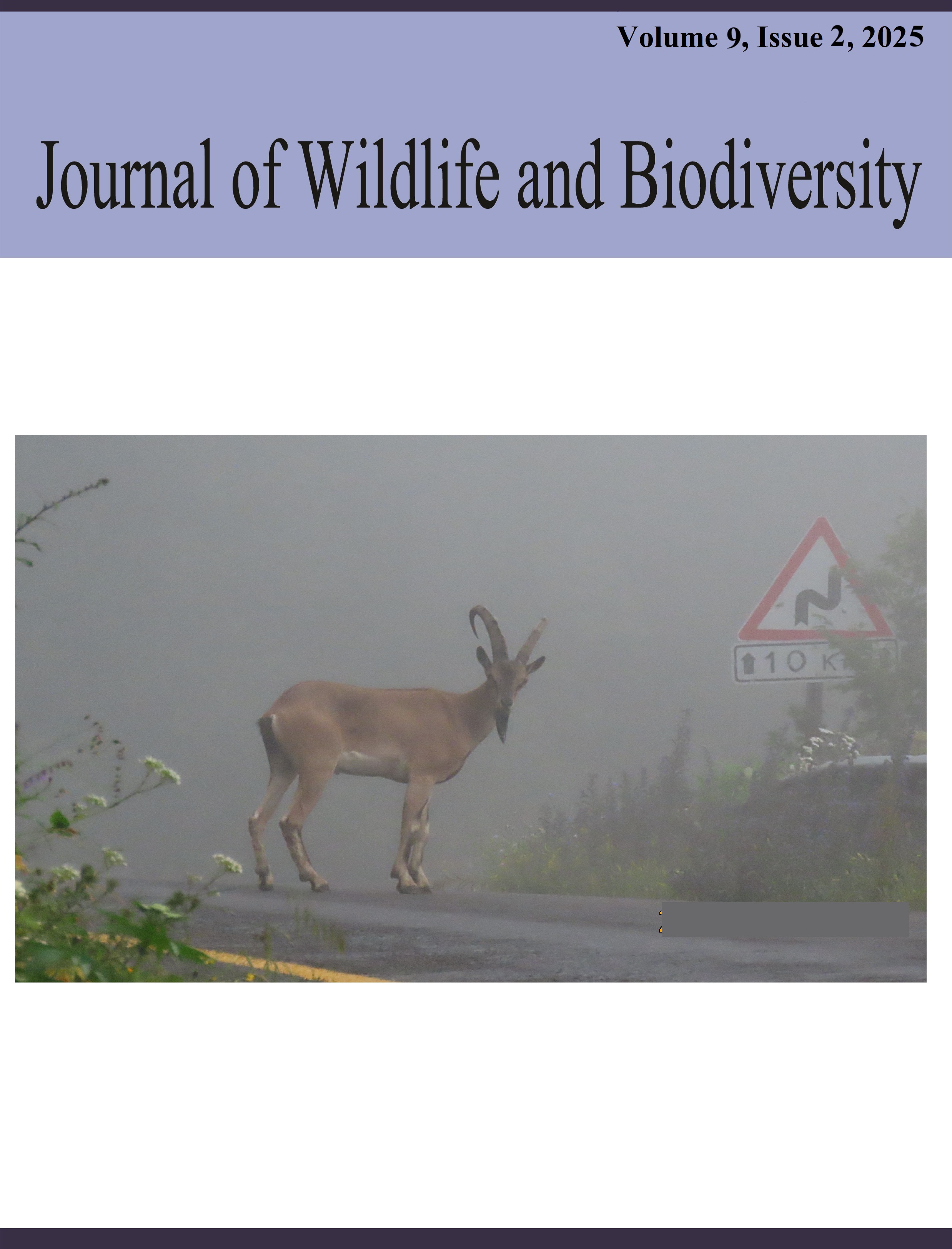The impact of education on borderless conservation: A case study of a seminar on capacity-building for officials from parties implementing CITES in China
DOI:
https://doi.org/10.5281/zenodo.15242910Keywords:
Biodiversity, endangered species, international collaboration, wildlife traffickingAbstract
Abstract
The concept of borderless conservation emphasizes the necessity for international collaboration aimed at safeguarding biodiversity and natural resources. The illegal trade of wildlife across borders significantly contributes to the extinction of various species. Proper enforcement of the Convention on International Trade in Endangered Species of Wild Fauna and Flora (CITES) has the potential to be instrumental in curtailing this detrimental trend. Education and capacity-building initiatives are essential components in the protection of biodiversity and natural resources, necessitating international dialogue and information sharing. This study assesses the effects of a seminar aimed at building the capacities of CITES scientific officials in China, with participants from nine developing nations. The seminar included diverse topics such as the regulation of endangered plant trade, the protection of aquatic wildlife, and strategies for combating illegal wildlife trafficking. Methodologically, a combination of qualitative and quantitative approaches was employed, utilizing surveys and interviews to evaluate participant awareness before and after the seminar. Findings indicate the effectiveness of seminars in fostering collaboration and enhancing expert capabilities, demonstrating that all offered courses had a substantial positive impact on the participants. This study’s outcomes provide a foundation for refining future CITES training initiatives to maximize their effectiveness.
References
Abensperg-Traun, M. (2020). CITES, sustainable use of wild species, and incentive-driven conservation in developing countries, with an emphasis on southern Africa. Biological Conservation, 142(5), 948–963. https://doi.org/10.1016/j.biocon.2008.12.034
Adger, W. N., & Jordan, A. (2009). Governance for sustainability: A global perspective.
Brown, D., & Swails, E. (2006). Comparative case study 3: The Convention on International Trade in Endangered Species (CITES). Comparative Case Study, 3(November), 1–15.
Convention on International Trade in Endangered Species of Wild Fauna and Flora (CITES). (2021). Report of the Animals Committee on its 31st meeting. https://cites.org/sites/default/files/eng/com/ac-pc/ac31-pc25/E-AC31-10-PC25-11-Add-R1.pdf
CITES. (n.d.). Capacity building - CITES. Retrieved 2024, from https://cites.org/eng/prog/capacity_building/index.php
Daniel, T. (2019). Assessing awareness amongst critical stakeholders on the CITES implementation in Nigeria.
Davis, B. P., Clevenger, C. K., Posnock, S., Robertson, B. D., & Ander, D. S. (2015). Teaching the teachers: Faculty development in inter-professional education. Applied Nursing Research, 28, 31–35. https://doi.org/10.1016/j.apnr.2014.10.001
Dongol, Y., & Heinen, J. T. (2012). Pitfalls of CITES implementation in Nepal: A policy gap analysis. Environmental Management, 50(2), 181–190. https://doi.org/10.1007/s00267-012-9896-4
Environmental Management Group (EMG). (2004). Capacity building for biological diversity – A situation and needs analysis for the Environmental Management Group (EMG) (Document EMG 9/1). International Environment House, Geneva, Switzerland.
Franckx, P. E. (2003). The relationship between CITES and UNCLOS. International Journal of Marine and Coastal Law, 18(2), 1–20. https://doi.org/10.1163/157180803100384010
Frantz, J. M., Bezuidenhout, J., Burch, V. C., Mthembu, S., Rowe, M., Tan, C., Van Wyk, J., & Van Heerden, B. (2015). The impact of a faculty development programme for health professions educators in sub-Saharan Africa: An archival study. BMC Medical Education, 15(1), 1–8. https://doi.org/10.1186/s12909-015-0316-3
Heid, B., & Márquez-Ramos, L. (2023). International environmental agreements and imperfect enforcement: Evidence from CITES. Journal of Environmental Economics and Management, 118, 102784. https://doi.org/10.1016/j.jeem.2023.102784
Heinrich, S., & Gomez, L. (2021). India’s use of CITES Appendix III. Nature Conservation, 44, 89–103. https://doi.org/10.3897/natureconservation.44.63688
Ibrahim Salmin, A.-l. (2023). Assessing gaps in awareness, knowledge, and capacity of CITES implementation within Zanzibar’s enforcement agencies (Master’s thesis proposal). Universidad Internacional de Andalucía; Sede Antonio Machado.
Kettunen, M., & ten Brink, P. (2015). Economic analysis of biodiversity and ecosystem services: Final report.
Kirkpatrick, D. L. (1994). Evaluating training programs: The four levels. Berrett-Koehler Publishers.
Kothari, C. (2004). Research methodology: Methods and techniques (2nd ed.). New Age International Publishers.
Krueger, R. (2002). Designing and conducting focus group interviews. Universidad Internacional de Andalucía.
Lim, L. A., & Choy, L. F. J. (2014). Preparing staff for problem-based learning: Outcomes of a comprehensive faculty development program. International Journal of Research Studies in Education, 3(3), 53–68. https://doi.org/10.5861/ijrse.2014.739
Lukumbuzya, K., & Sianga, C. (2017). Traffic overview of the timber trade in East and Southern Africa: National perspectives and regional trade linkages.
Nelson, A. (2020). A triangle of vulnerability: Changing patterns of illicit trafficking off the Swahili coast.
Patel, N. G. (2015). Characterization of illegal wildlife trade networks (Doctoral dissertation). ProQuest Dissertations and Theses.
Scheffers, B. R., Oliveira, B. F., Lamb, I., & Edwards, D. P. (2019). Global wildlife trade across the tree of life. Science, 366(6461), 71–76. https://doi.org/10.1126/science.aav5327
Secretariat, C., Nations, U., & Programme, E. (2022). Issues brief: The current status and conservation options for.
Species Survival Commission. (1975). Guidelines for SSC members on engaging in the Convention on International Trade in Endangered Species of Wild Fauna and Flora (CITES). IUCN Species Survival Commission.
Wijnstekers, W. (2018). The evolution of CITES: A reference to the Convention on International Trade in Endangered Species of Wild Fauna and Flora.
Williamson, I. P., Rajabifard, A., & Feeney, M. E. F. (Eds.). (2003). Developing spatial data infrastructures: From concept to reality. CRC Press.
Zhang, Y. (2022). Capacity building for environmental governance in China: Case studies and lessons learned.



